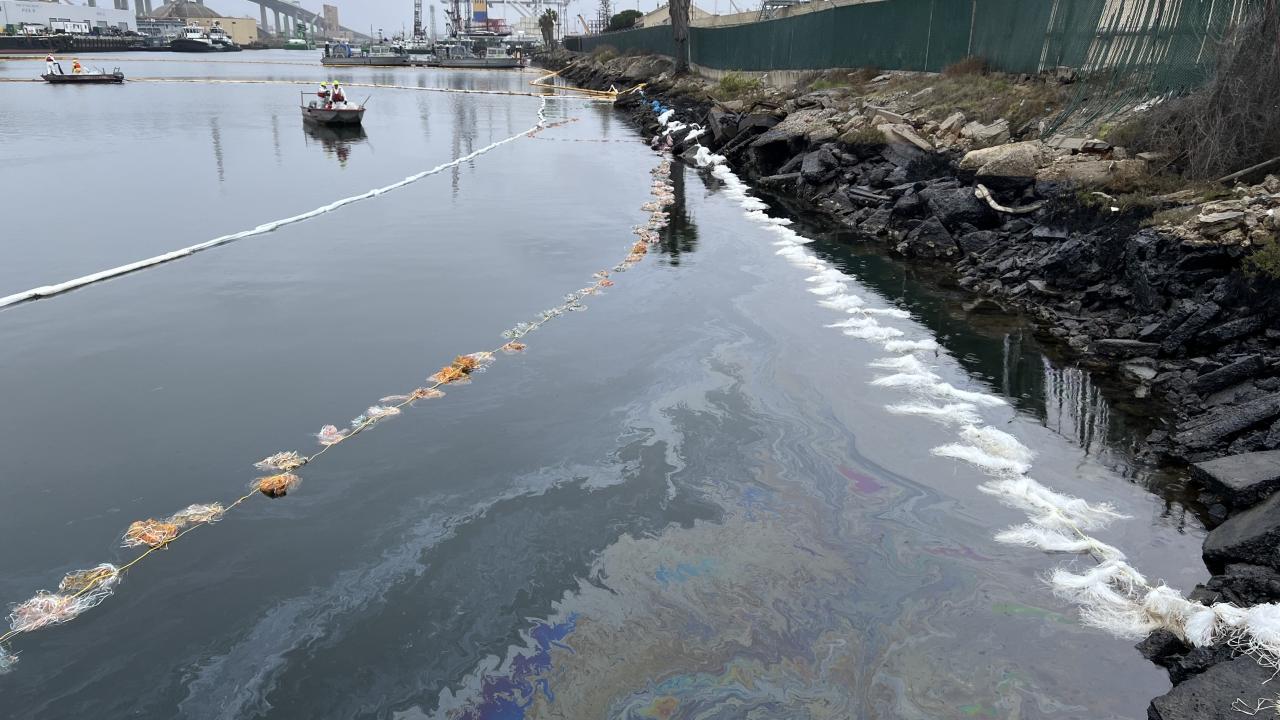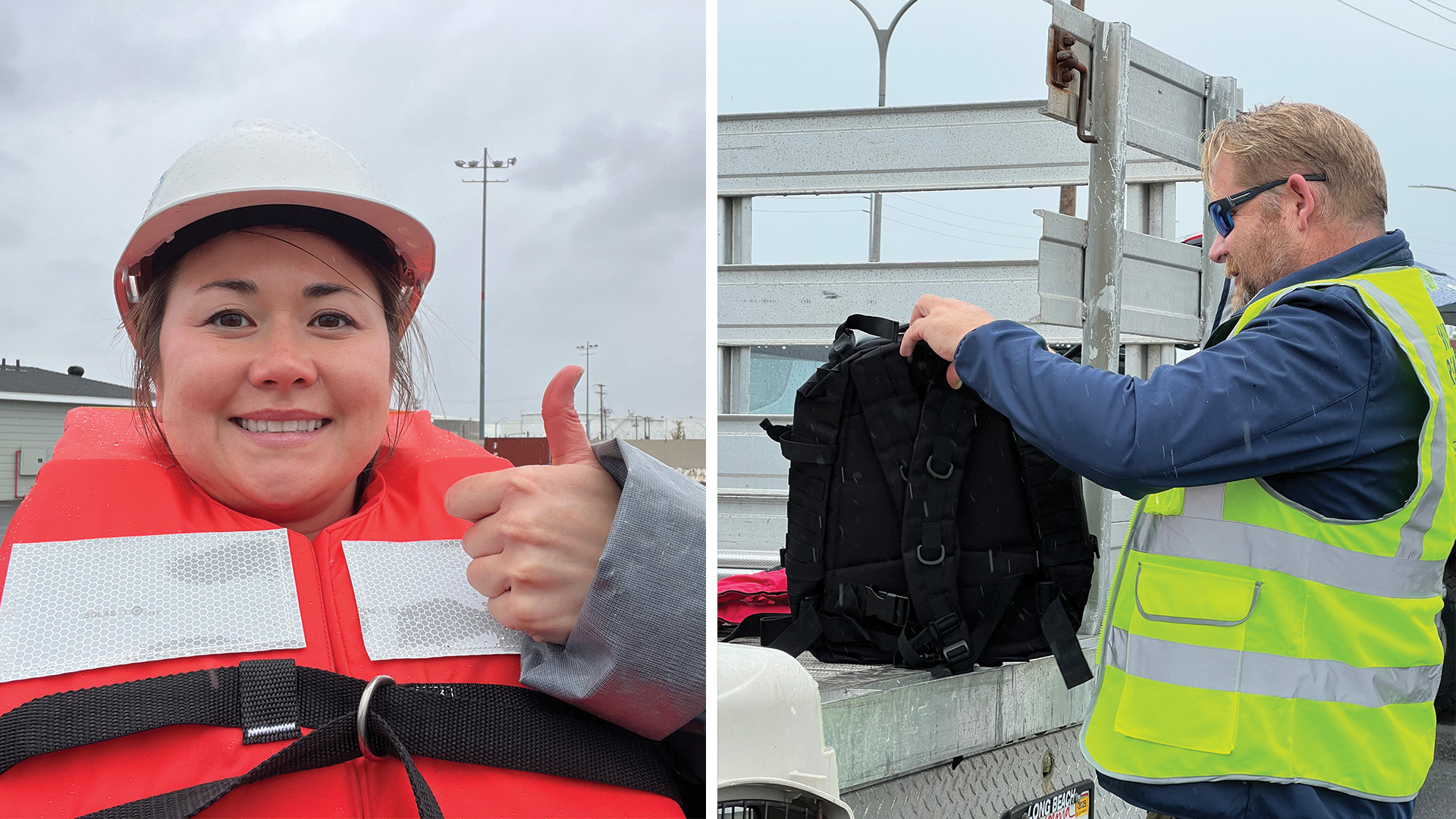
Answering the Call: Responding to Pico Spill
From the point of view of an OWCN responder
On Friday, March 14, Brett Long and I were notified by OWCN of an oil spill in Long Beach around 10:00 am. We were able to gather some of our personal gear, a company vehicle, and coordinate with the staff that were going to remain on-site to provide coverage for the rest of the day. Brett and I had both never been the first on-scene, and we were pretty excited to have the opportunity to help but also nervous in anticipation of what we might be walking into.
The OWCN C-container that is located at the Los Angeles Oiled Bird Care and Education Center was beautifully stocked and organized, and it felt a little like a shopping spree to be able to pick out what equipment we might need for the response with the information we had from the OWCN management team. We selected some nets, some of the pre-packaged spill response kits, and refamiliarized ourselves with the Wildlife Recovery app while we made our way down to the spill area. Jeanette Bates from International Bird Rescue (IBR) was the third field person deployed that day and followed us in the IBR response vehicle.
When the three of us arrived, we went over to the trailer that had been set up as a small Incident Command Post. Brett touched base with them regarding what wildlife they had seen oiled (one of the people in the trailer had a photo and video of an oiled pelican from that morning), which thankfully, was not very many animals. They said they had seen 'the swimmy ones' diving through the sheen (cormorants - we clarified) and that single pelican, but that otherwise they had not seen much impact to wildlife and that the spill was largely contained by the time we'd arrived. There were lots of booms out on the water and there was a fair amount of sheen immediately where the storm drains fed out into the harbor, but past the second layer of booms the water appeared clear.

We spent a few hours doing surveys of the harbor area, assessing potential areas where birds may hang out, photographing the sheen/oil impacts, and using binoculars to look at the chests, feet, and legs of every gull that happened to land around the spill area. We saw a few Double-Crested Cormorants swimming through the sheen and hunting. A handful of Western Gulls would land in the sheen or nearby but were not visibly oiled. We did not see the pelican, but we searched high and low. Someone at the Command Post mentioned that they believed a lot of bird activity was drawn in by a bait ball that had come into the harbor area that morning; they asked if we ever specifically haze away prey items like bait balls. Both Brett and I weren't sure but found the question and prospect interesting!
The conditions were...gloomy, rainy, misty, and cold. It was lightly sprinkling and fairly chilly out by the water and depending on which side of the pier you were on, there were some fairly strong winds blowing. The rain made it more challenging to use our binoculars/phones for recording our surveys in the Wildlife Recovery app. The cold made it challenging to be outdoors for longer lengths of time. The hard-hat and protective eyewear and the Personal Floatation Devices (PFD's) also made it a little challenging to see and move around, but they provided more entertainment than anything - getting in and out of the vehicle with a PFD on made for true comedy.
I was struck by how respectful and collaborative all agencies are when this type of event happens – even individuals representing the Responsible Party - in working together to ensure the best possible outcome for any animals impacted. They seemed genuinely concerned about the pelican and any other animals that might have been impacted. It was really cool to see everyone working collaboratively without blame being thrown or hurt feelings.
Kyra Mills (OWCN) and Amanda Fowler (CDFW-OSPR) arrived around 4:30 pm and we walked the site with them and filled them in on all of the details that we had gathered, and did an additional survey while we were all together around 5 pm. Brett, Jeanette and I headed out around 6:15 pm from the spill area ready to help the following day, if needed - we were not mobilized again for Saturday but we were on standby ready to help any way we could.
We loved this spill experience and being a part of this network and the work that we can do as a part of the OWCN.
